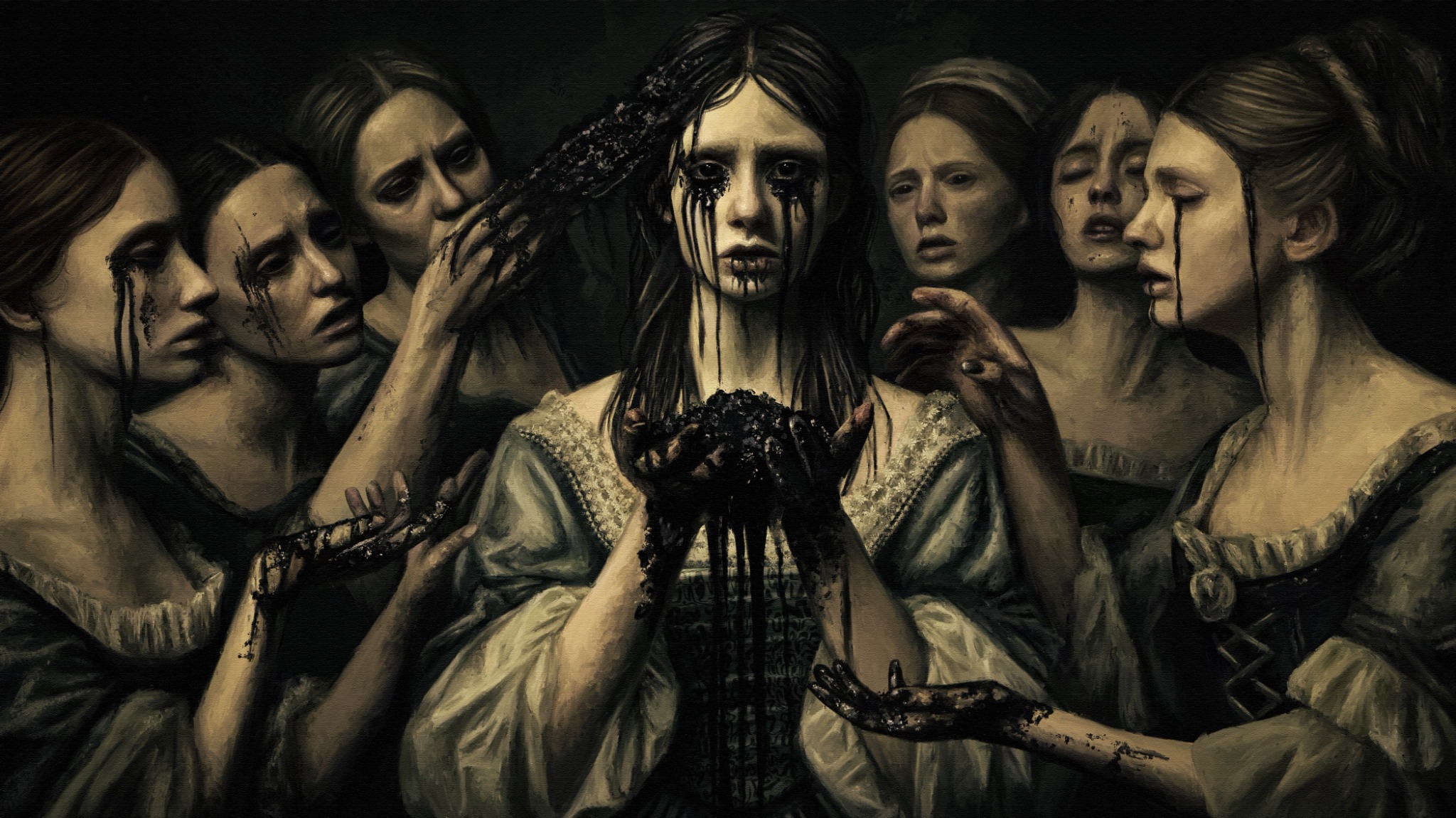
Communion of The Damned (2025)
Communion of the Damned transforms the sacred act of unity into a ritual of decay. At the centre stands a woman with hollowed eyes streaming black tears, her hands cupped in offering as a thick, tar-like substance seeps through her fingers. Around her, six others encircle in quiet devotion, reaching, touching, almost worshipping, each one marked by the same contagion. What should be a scene of grace and salvation instead becomes one of shared corruption.
⤷ This piece serves as both a continuation and a culmination of We Must Not Speak of It. Where the former explored enforced silence, Communion of the Damned depicts what happens when silence festers and becomes doctrine. The women are not victims of a single act, but adherents to a system that sanctifies their suffering. The black material—ambiguous and symbolic—passes from hand to hand like a perverse Eucharist, each participant perpetuating the same ritual that destroyed her.
Cox frames the composition in the language of Baroque religious painting: a chiaroscuro tableau evoking Last Supper altarpieces and Marian gatherings. Yet, instead of divine illumination, the light feels diseased, radiating from the central figure’s pallid face and the gleam of the viscous offering. Every gesture is tender but heavy with inevitability, as though each woman recognises the futility of redemption yet performs it anyway.
The painting suggests a broader commentary on complicity—how communities, especially among women, are coerced into maintaining systems of quiet endurance, how devotion becomes contamination when performed under oppression. And still, amid the rot, there is grace: a strange, terrible beauty in their shared defiance, in their refusal to look away from one another.
0 Comments Add a Comment?